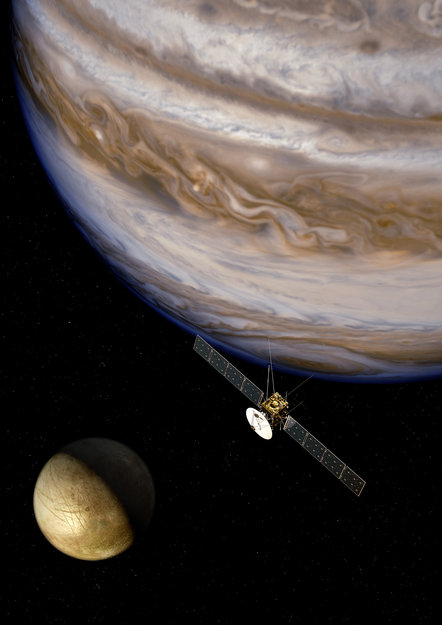ESA chooses experiments for mission to Jupiter!
26 February 2013
Scientists think that Jupiter's moons may have huge oceans under their icy surfaces. ESA's JUICE mission is to try and understand if they could have any life in their oceans, and if there could be any habitable worlds around gas giants like Jupiter. ESA has been busy choosing the 11 scientific experiments that will study the giant planet and its moons.
The JUpiter ICy moons Explorer mission is due for launch in 2022, and will take 8 years to arrive at Jupiter, the biggest planet in the Solar System. It will then spend at least three years observing the planet and three of its largest icy moons, Ganymede, Callisto and Europa.
The instruments that will be sent to Jupiter include cameras and spectrometers (to measure light), a laser altimeter (to measure altitude)and an ice-penetrating radar. The mission will also carry a magnetometer (to measure magnetic fields). These instruments will be developed by teams of scientists from 15 European countries together with the US and Japan.
The spacecraft will fly by Callisto, the most heavily cratered object in the Solar System, more than twelve times. It will also fly past Europa twice so that it can measure the thickness of its icy crust. JUICE will end up in orbit around the moon called Ganymede, where it will study its icy surface and internal structure, including its ocean under the surface. Ganymede is the biggest moon in the Solar System and the only one known to create its own magnetic field.
"Jupiter and its icy moons make up a kind of mini-Solar System in their own right, offering European scientists and our international partners the chance to learn more about the formation of potentially habitable worlds around other stars," says Dmitrij Titov, ESA's JUICE Study Scientist.





